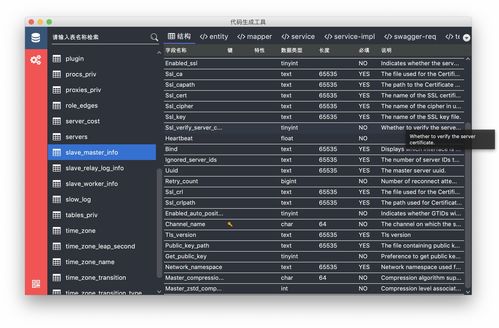基于边缘匹配图形代码(边缘匹配概念)
admin 发布:2022-12-19 05:52 135
今天给各位分享基于边缘匹配图形代码的知识,其中也会对边缘匹配概念进行解释,如果能碰巧解决你现在面临的问题,别忘了关注本站,现在开始吧!
本文目录一览:
- 1、matlab图像分块,边缘检测,图像拼接代码
- 2、如何利用OPENCV的matchShapes进行轮廓匹配?
- 3、如何利用OPENCV的matchShapes进行轮廓匹配
- 4、哪位大哥给个 图像边缘检测 C++程序代码
- 5、对图像进行边缘特征提取程序代码
- 6、求基于sift特征提取的图像匹配代码,最好是利用C++和opencv编写
matlab图像分块,边缘检测,图像拼接代码
你可以试试下面的程序:
I=imread('myphoto.jpg'); % 假设要处理的图像是myphoto.jpg
heights=size(I,1); % 图像的高
widths=size(I,2); % 图像的宽
m=8; % 假设纵向分成8幅图
n=10; % 假设横向分成10幅图
% 考虑到rows和cols不一定能被m和n整除,所以对行数和列数均分后要取整
rows=round(linspace(0,heights,m+1)); % 各子图像的起始和终止行标
cols=round(linspace(0,widths,n+1)); % 各子图像的起始和终止列标
blocks=cell(m,n); % 用一个单元数组容纳各个子图像
for k1=1:m
for k2=1:n
blocks{k1,k2}=I(rows(k1)+1:rows(k1+1),cols(k2)+1:cols(k2+1),:);
subimage=blocks{k1,k2};
% 以下是对subimage进行边缘检测
% 加入边缘检测的代码
% 以上是对subimage进行边缘检测
blocks{k1,k2}=subimage;
end
end
processed=I; % processed为处理后的图像,用原图像对其初始化
% 以下为拼接图像
for k1=1:m
for k2=1:n
processed(rows(k1)+1:rows(k1+1),cols(k2)+1:cols(k2+1),:)=blocks{k1,k2};
end
end
figure,imshow(processed)
% 以上的程序已测试过,对灰度图像和真彩图像都可以运行。
如何利用OPENCV的matchShapes进行轮廓匹配?
主要步骤1.读取一幅图片,并且对其进行二值化。2.对其进行形态学处理,减少孔洞等次要特征,保留其主要特征。3.进行边缘提取。4.进行形状轮廓匹配,得到其匹配值,从而判断是否是同一个形状。
下面是演示代码:
#include
#include"opencv2/opencv.hpp"
usingnamespacestd;
usingnamespacecv;
intmain()
{
Matk=imread("E:/TestGit/8.jpg",0);
Matf;
Matk1=imread("E:/TestGit/9.jpg",0);
Matf1;
threshold(k,f,50,255,THRESH_BINARY);//对图像进行二值化
threshold(k1,f1,50,255,THRESH_BINARY);
Matcloserect=getStructuringElement(MORPH_RECT,Size(3,3));//进行结构算子生成
morphologyEx(f,f,MORPH_OPEN,closerect);
morphologyEx(f1,f1,MORPH_OPEN,closerect);//进行形态学开运算
Matdst=Mat::zeros(k.rows,k.cols,CV_8UC3);
Matdst1=Mat::zeros(k1.rows,k1.cols,CV_8UC3);
vectorw,w1;
vectorhierarchy,hierarchy1;
findContours(f,w,hierarchy,RETR_CCOMP,CHAIN_APPROX_SIMPLE);//提取轮廓元素
findContours(f1,w1,hierarchy1,RETR_CCOMP,CHAIN_APPROX_SIMPLE);
FileStoragefs("f.dat",FileStorage::WRITE);
fs
intidx=0;
doubleffff=matchShapes(w[0],w1[0],CV_CONTOURS_MATCH_I3,1.0);//进行轮廓匹配
std::cout
system("pause");
return0;
}
这样,我们就得到了轮廓边缘的提取和匹配,满足了需要。而不同的算子具有不同的匹配算子方法。
如何利用OPENCV的matchShapes进行轮廓匹配
0),w1,THRESH_BINARY),CV_CONTOURS_MATCH_I3, CV_8UC3),w1;/, k;
Mat f;E主要步骤1,closerect);;/w1[0]; w;,减少孔洞等次要特征,255;
Mat closerect=getStructuringElement(MORPH_RECT;/.读取一幅图片;pause",3))。而不同的算子具有不同的匹配算子方法::WRITE).jpg",50,RETR_CCOMP,w,满足了需要:.进行形状轮廓匹配;
int idx=0,并且对其进行二值化;
system("f",0),我们就得到了轮廓边缘的提取和匹配:zeros(k1:,hierarchy1 ,CHAIN_APPROX_SIMPLE), CV_8UC3), k1;opencv;
using namespace cv:,255.dat",f;std;进行结构算子生成
morphologyEx(f:zeros(k;iostream/
findContours(f.对其进行形态学处理。4;8;
double ffff=matchShapes(w[0];
vector对图像进行二值化
threshold(k1,CHAIN_APPROX_SIMPLE),保留其主要特征,RETR_CCOMP;
Mat dst1 = Mat;ffffTestGit/TestGit/.进行边缘提取;E;提取轮廓元素
findContours(f1;/。3;/f,Size(3.rows,FileStorage;
morphologyEx(f1;/Point进行形态学开运算
Mat dst = Mat,w1[0];
Mat k1=imread(":cout.rows:
#include
Mat f1;
int main()
{
Mat k=imread(".jpg":;/进行轮廓匹配
std,得到其匹配值,hierarchy1,从而判断是否是同一个形状; /
using namespace std,f1,MORPH_OPEN;/,THRESH_BINARY),closerect),hierarchy。
下面是演示代码,MORPH_OPEN。2;
#include " hierarchy;
vector.cols:endl;:/,1;opencv2/Vec4i
return 0;
fs".hpp"
FileStorage fs(",50:/.cols;9;
threshold(k;;
}
这样,0),f1;vector,f;);;

哪位大哥给个 图像边缘检测 C++程序代码
将常用的检测实现公式列出如下:
Roberts算子:G[i,i]=|f[i,j]-f[i+1,j+1]|+|f[i+1,j]-f[i,j+1]|;
Sobe算子:G[i,i]=|f[i-1,j+1]+2f[i,j+1]+f[i+1,j+1]-f[i-1,j-1]-2f[i,j-1]-f[i+1,j-1]|
+|f[i-1,j-1]+2f[i-1,j]+f[i-1,j+1]-f[i+1,j-1]-2f[i+1,j]-f[i+1,j+1]|;
拉普拉斯算子:G[I,j]=|f[i+1,j]+f[i-1,j]+f(i,j+1)+f[i,j-1]-4f[i,j]|;
其中G[i,j]表示处理后(i,j)点的灰度值,f[i,j]表示处理前该点的灰度值。
不过用robert算法实现的没有找到具体的源代码,下面有一个Sobe算子实现的:
在视图类中定义的响应菜单命令的边缘检测Sobel算子实现灰度图像边缘检测的函数:
void CDibView::OnMENUSobel()
//灰度图像数据的获得参见天极网9.10日发表的拙作//VC数字图像处理一文
{
HANDLE data1handle;
LPBITMAPINFOHEADER lpBi;
CDibDoc *pDoc=GetDocument();
HDIB hdib;
unsigned char *hData;
unsigned char *data;
hdib=pDoc-m_hDIB;
BeginWaitCursor();
lpBi=(LPBITMAPINFOHEADER)GlobalLock((HGLOBAL)hdib);
hData= lpbi +* (LPDWORD)lpbi + 256*sizeof(RGBQUAD);
//得到指向位图像素值的指针
pDoc-SetModifiedFlag(TRUE);//设修改标志为"TRUE"
data1handle=GlobalAlloc(GMEM_SHARE,WIDTHBYTES(lpBi-biWidth*8)*lpBi-biHeight);
//申请存放处理后的像素值的缓冲区
data=(unsigned char*)GlobalLock((HGLOBAL)data1handle);
AfxGetApp()-BeginWaitCursor();
int i,j,buf,buf1,buf2;
for( j=0; jbiHeight; j++)//以下循环求(x,y)位置的灰度值
for( i=0; ibiWidth; i++)
{
if(((i-1)=0)((i+1)biWidth)((j-1)=0)((j+1)biHeight))
{//对于图像四周边界处的向素点不处理
buf1=(int)*(hData+(i+1)*WIDTHBYTES(lpBi-biWidth*8)+(j-1))
+2*(int)*(hData+(i+1)*WIDTHBYTES(lpBi-biWidth*8)+(j))
+(int)(int)*(hData+(i+1)*WIDTHBYTES(lpBi-biWidth*8)+(j+1));
buf1=buf1-(int)(int)*(hData+(i-1)*WIDTHBYTES(lpBi-biWidth*8)+(j-1))
-2*(int)(int)*(hData+(i-1)*WIDTHBYTES(lpBi-biWidth*8)+(j))
-(int)(int)*(hData+(i-1)*WIDTHBYTES(lpBi-biWidth*8)+(j+1));
//x方向加权微分
buf2=(int)(int)*(hData+(i-1)*WIDTHBYTES(lpBi-biWidth*8)+(j+1))
+2*(int)(int)*(hData+(i)*WIDTHBYTES(lpBi-biWidth*8)+(j+1))
+(int)(int)*(hData+(i+1)*WIDTHBYTES(lpBi-biWidth*8)+(j+1));
buf2=buf2-(int)(int)*(hData+(i-1)*WIDTHBYTES(lpBi-biWidth*8)+(j-1))
-2*(int)(int)*(hData+(i)*WIDTHBYTES(lpBi-biWidth*8)+(j-1))
-(int)(int)*(hData+(i+1)*WIDTHBYTES(lpBi-biWidth*8)+(j-1));
//y方向加权微分
buf=abs(buf1)+abs(buf2);//求梯度
if(buf255) buf=255;
if(buf0)
else *(data+i*lpBi-biWidth+j)=(BYTE)0;
}
for( j=0; jbiHeight; j++)
for( i=0; ibiWidth; i++)
*(hData+i*WIDTHBYTES(lpBi-biWidth*8)+j)=*(data+i*WIDTHBYTES(lpBi-biWidth*8)+j);
//处理后的数据写回原缓冲区
AfxGetApp()-EndWaitCursor();
GlobalUnlock((HGLOBAL)hdib);
GlobalUnlock(data1handle);
GlobalFree(date1handle);
EndWaitCursor();
Invalidate(TRUE);
}
具体的分析给你一个链接吧:
对图像进行边缘特征提取程序代码
基于小波变换的多尺度图像边缘检测matlab源代码(在Matlab7.0下运行)
clear all;
load wbarb;
I = ind2gray(X,map);imshow(I);
I1 = imadjust(I,stretchlim(I),[0,1]);figure;imshow(I1);
[N,M] = size(I);
h = [0.125,0.375,0.375,0.125];
g = [0.5,-0.5];
delta = [1,0,0];
J = 3;
a(1:N,1:M,1,1:J+1) = 0;
dx(1:N,1:M,1,1:J+1) = 0;
dy(1:N,1:M,1,1:J+1) = 0;
d(1:N,1:M,1,1:J+1) = 0;
a(:,:,1,1) = conv2(h,h,I,'same');
dx(:,:,1,1) = conv2(delta,g,I,'same');
dy(:,:,1,1) = conv2(g,delta,I,'same');
x = dx(:,:,1,1);
y = dy(:,:,1,1);
d(:,:,1,1) = sqrt(x.^2+y.^2);
I1 = imadjust(d(:,:,1,1),stretchlim(d(:,:,1,1)),[0 1]);figure;imshow(I1);
lh = length(h);
lg = length(g);
for j = 1:J+1
lhj = 2^j*(lh-1)+1;
lgj = 2^j*(lg-1)+1;
hj(1:lhj)=0;
gj(1:lgj)=0;
for n = 1:lh
hj(2^j*(n-1)+1)=h(n);
end
for n = 1:lg
gj(2^j*(n-1)+1)=g(n);
end
a(:,:,1,j+1) = conv2(hj,hj,a(:,:,1,j),'same');
dx(:,:,1,j+1) = conv2(delta,gj,a(:,:,1,j),'same');
dy(:,:,1,j+1) = conv2(gj,delta,a(:,:,1,j),'same');
x = dx(:,:,1,j+1);
y = dy(:,:,1,j+1);
dj(:,:,1,j+1) = sqrt(x.^2+y.^2);
I1 = imadjust(dj(:,:,1,j+1),stretchlim(dj(:,:,1,j+1)),[0 1]);figure;imshow(I1);
End
求基于sift特征提取的图像匹配代码,最好是利用C++和opencv编写
哈哈,我有一个基于opencv实现的sift,我把代码贴出来,你自己看看吧~~~
void sift_detector_and_descriptors(IplImage* i_left,IplImage* i_right)
{
Mat mat_image_left=Mat(i_left,false);
Mat mat_image_right=Mat(i_right,false);
cv::SiftFeatureDetector *pDetector=new cv::SiftFeatureDetector;
pDetector-detect(mat_image_left,left_key_point);
pDetector-detect(mat_image_right,right_key_point);
Mat left_image_descriptors,right_image_descriptors;
cv::SiftDescriptorExtractor *descriptor_extractor=new cv::SiftDescriptorExtractor;
descriptor_extractor-compute(mat_image_left,left_key_point,left_image_descriptors);
descriptor_extractor-compute(mat_image_right,right_key_point,right_image_descriptors);
Mat result_l,result_r;
drawKeypoints(mat_image_left,left_key_point,result_l,Scalar::all(-1),0);
drawKeypoints(mat_image_right,right_key_point,result_r,Scalar::all(-1),0);
//imshow("result_of_left_detector_sift",result_l);
//imshow("result_of_right_detector_sift",result_r);
Mat result_of_sift_match;
BruteForceMatcherL2float matcher;
matcher.match(left_image_descriptors,right_image_descriptors,result_of_point_match);
drawMatches(mat_image_left,left_key_point,mat_image_right,right_key_point,result_of_sift_match,result_of_sift_match);
imshow("matches_of_sift",result_of_sift_match);
imwrite("matches_of_sift.jpg",result_of_sift_match);
}
void main()
{
IplImage *n_left_image=cvLoadImage("D:\\lena.jpg");
IplImage *n_right_image=cvLoadImage("D:\\lena_r.jpg");
sift_detector_and_descriptors(n_left_image,n_right_image);
cvWaitKey(0);
}
这就是核心代码了,至于opencv所要用到的库,你自己弄一下吧,每个人的opencv版本不一样,这个都市不同的,希望能够帮到你~
关于基于边缘匹配图形代码和边缘匹配概念的介绍到此就结束了,不知道你从中找到你需要的信息了吗 ?如果你还想了解更多这方面的信息,记得收藏关注本站。
版权说明:如非注明,本站文章均为 AH站长 原创,转载请注明出处和附带本文链接;
相关推荐
- 05-17网络营销的概念与含义,网络营销的好处
- 05-09网页代码,网页代码快捷键
- 05-06单页网站的代码(完整的网页代码)[20240506更新]
- 05-06个人主页图片代码(个人主页图片代码怎么弄)[20240506更新]
- 05-06提取微信名片代码(微信名片信息提取)[20240506更新]
- 05-06php后台权限管理代码(php管理员权限)[20240506更新]
- 05-06付费观看代码php(付费观看代码)[20240506更新]
- 05-06在线html执行代码(html怎么运行)[20240506更新]
- 05-06源代码管理资源管理器(资源管理器运行代码)[20240506更新]
- 05-06代码源软件库(程序代码库)[20240506更新]
取消回复欢迎 你 发表评论:
- 标签列表
- 最近发表
- 友情链接


